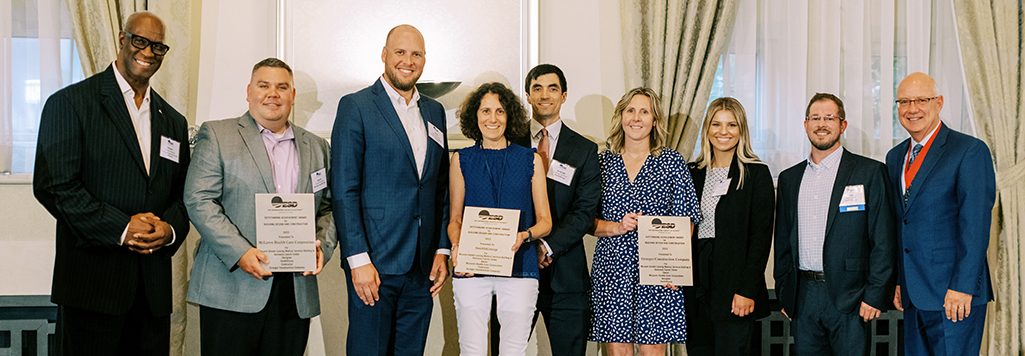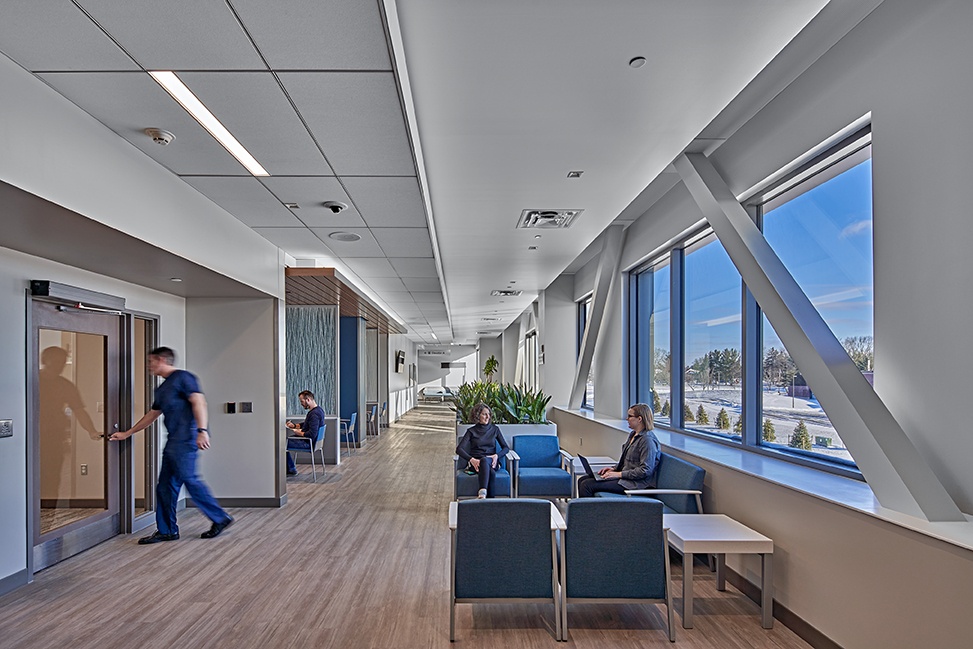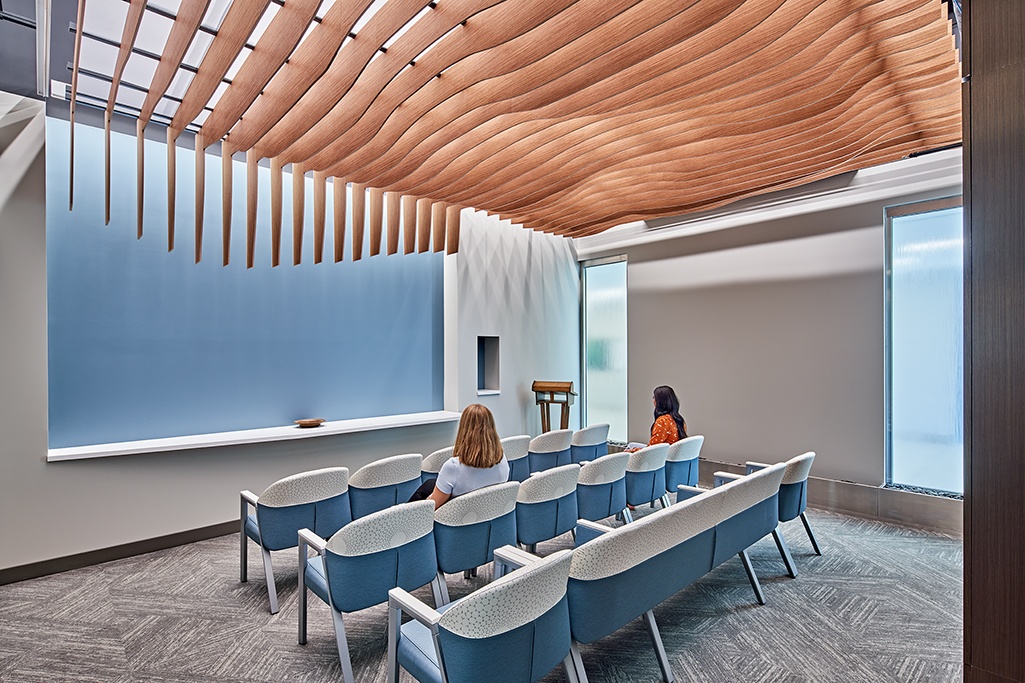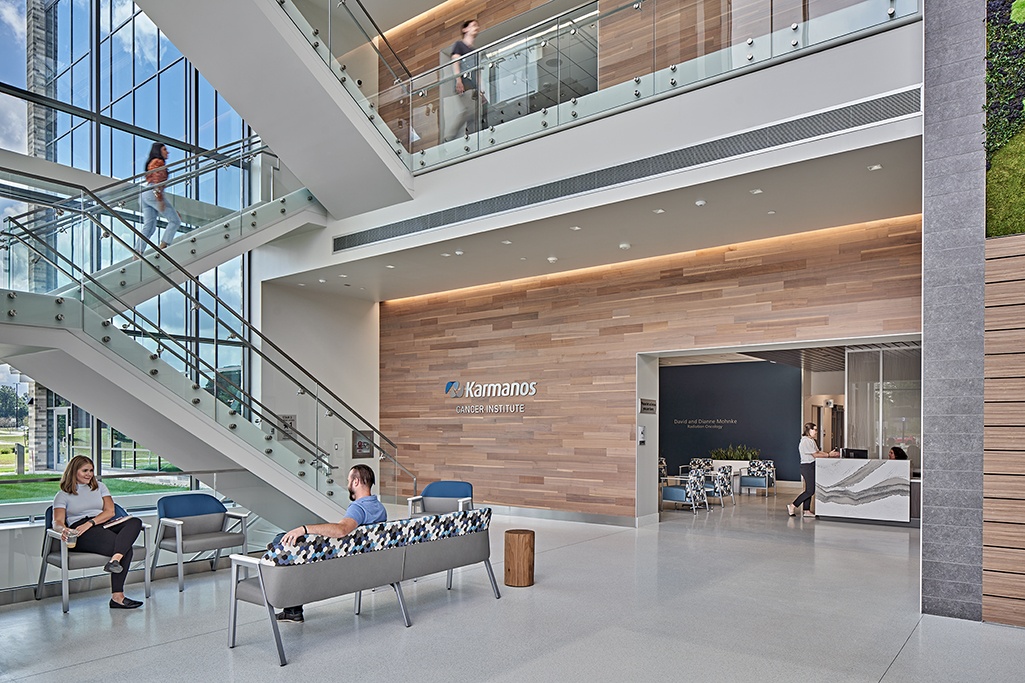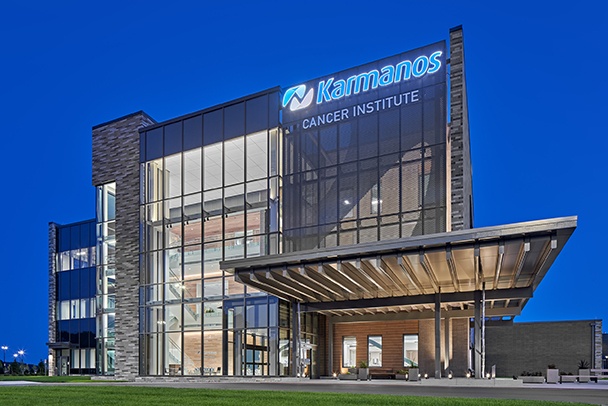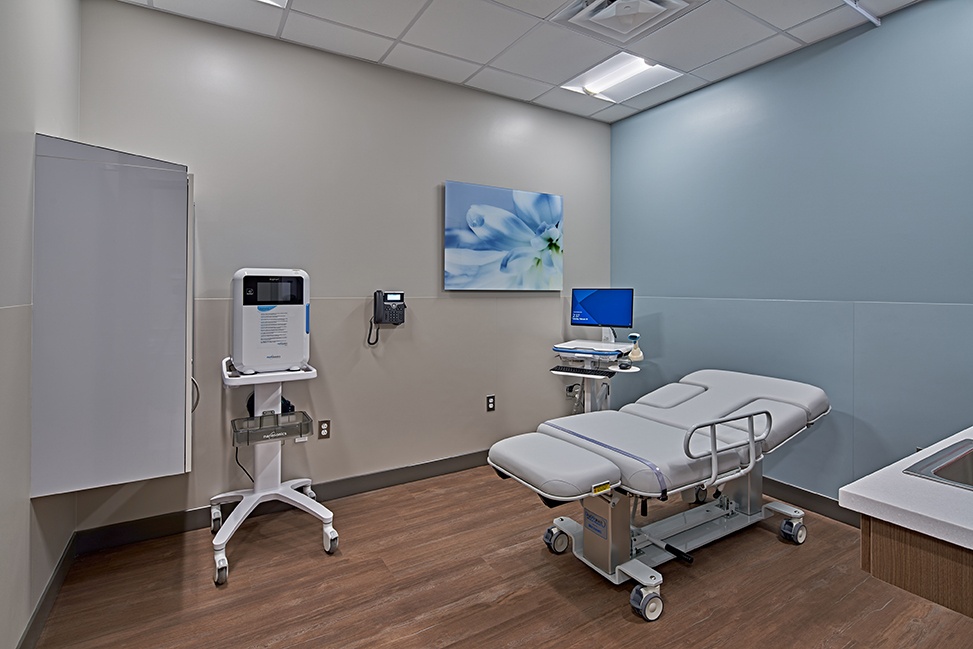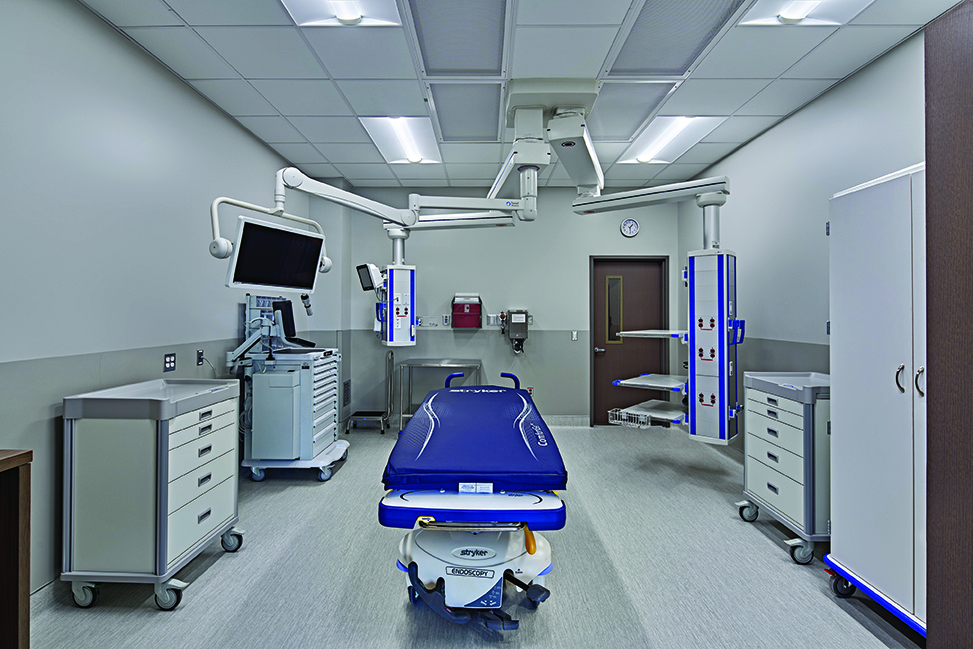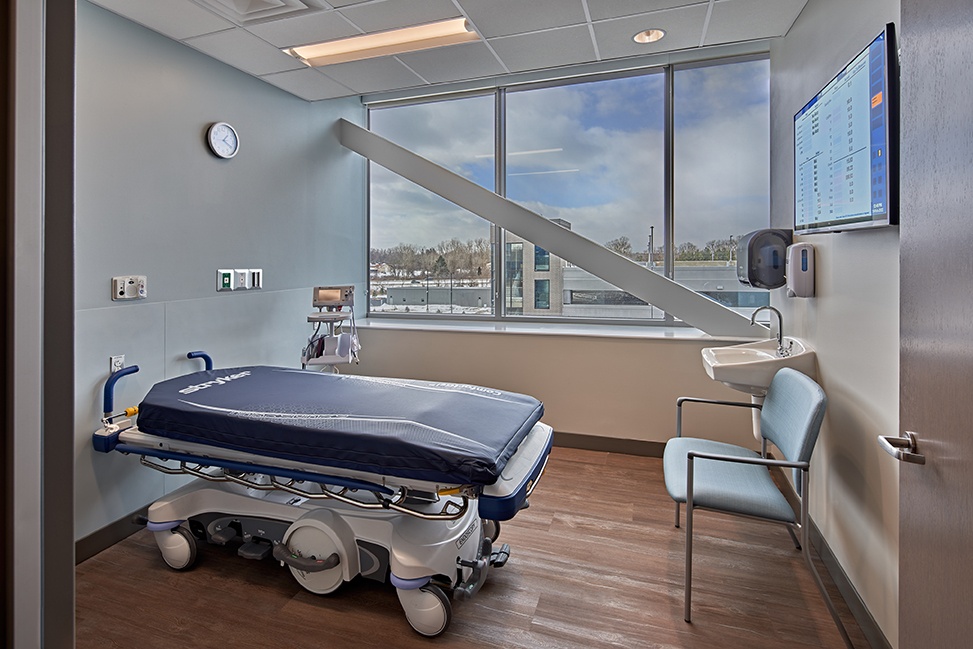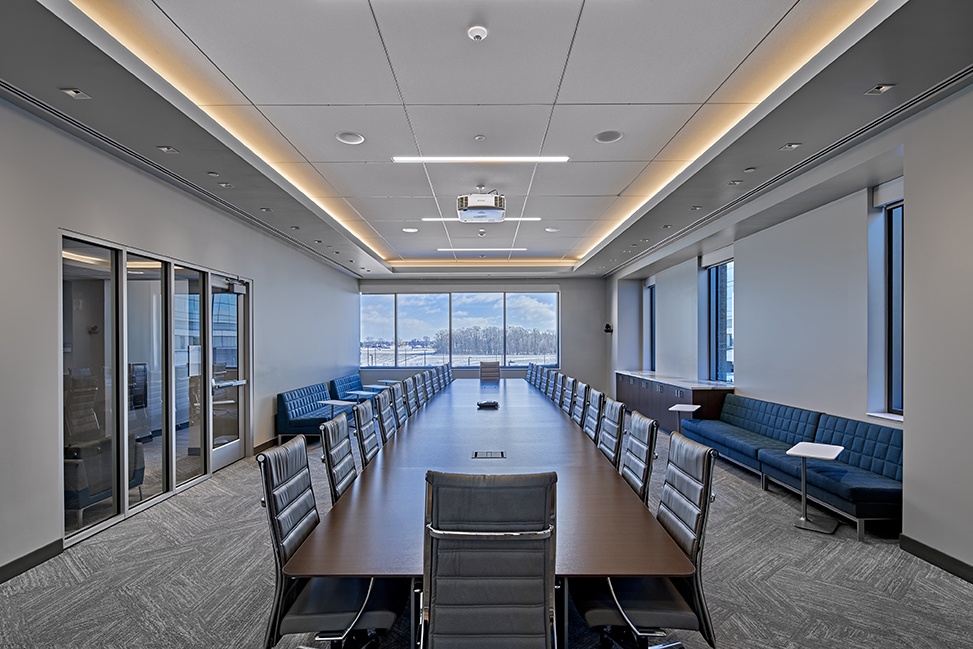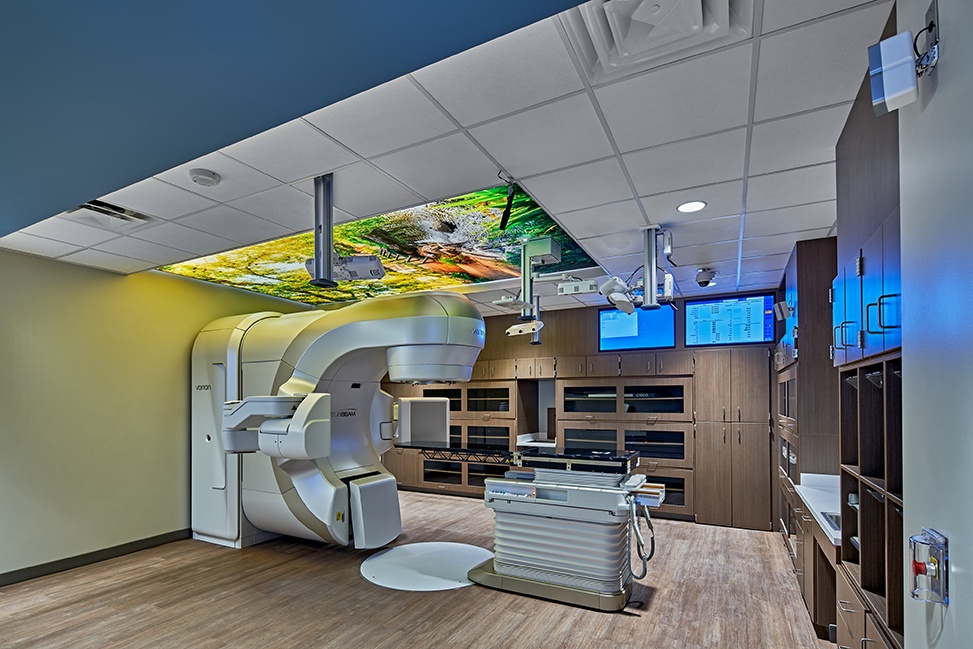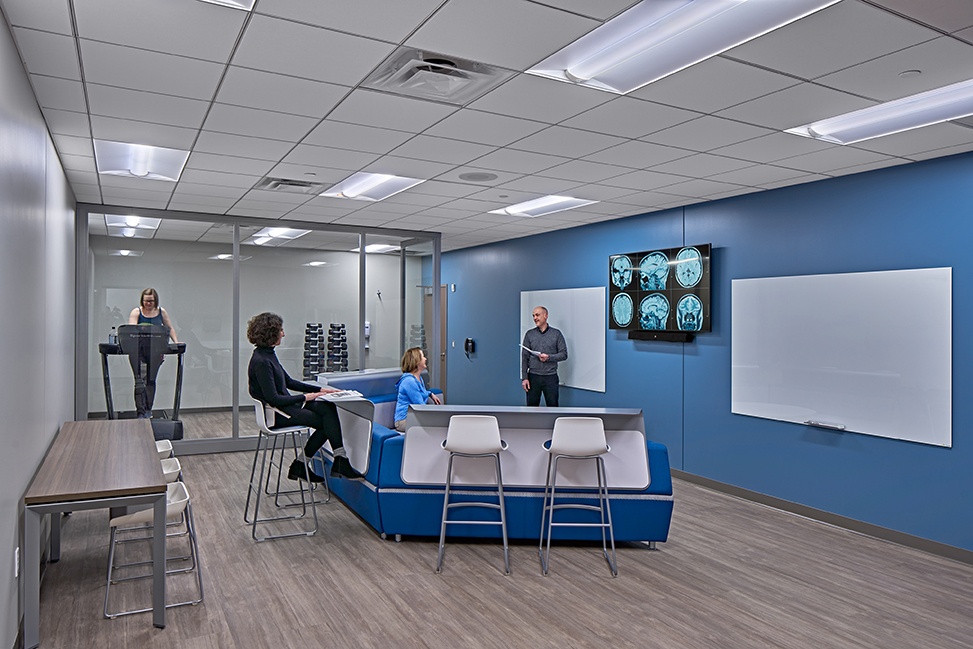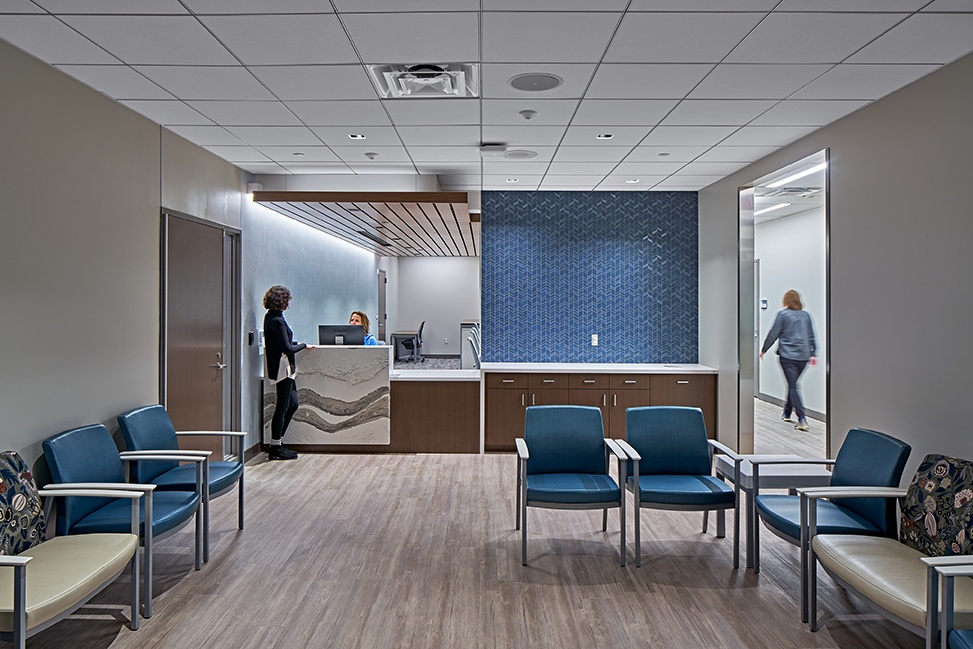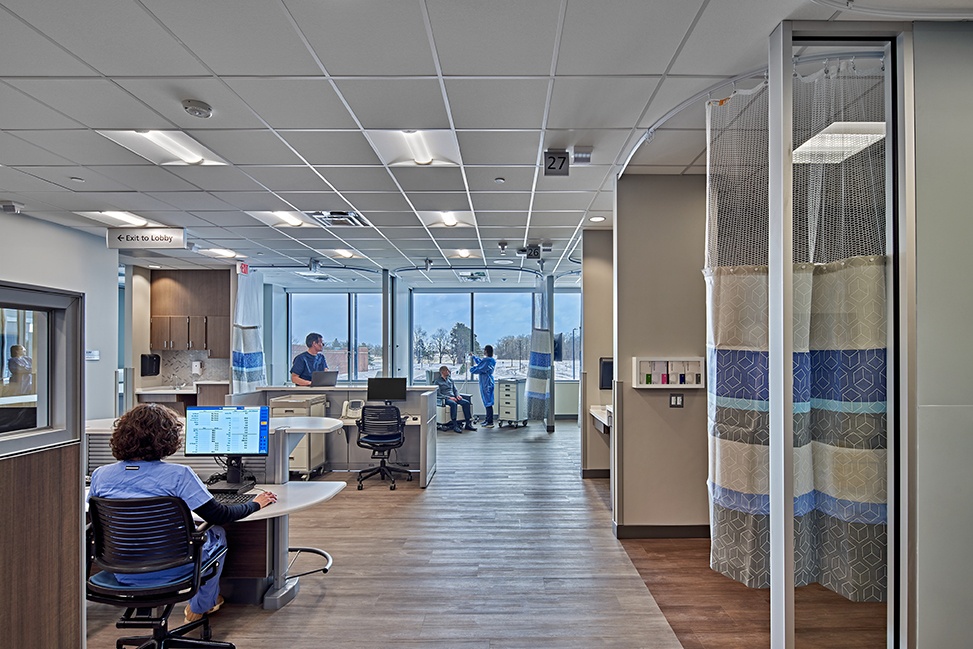Granger Construction was honored to join the McLaren Greater Lansing Medical Services Building and Karmanos Cancer Institute project team in receiving a 2023 Engineering Society of Detroit Construction and Design Award.
Major partners on this project included McLaren Health Care (Owner); McLaren Greater Lansing (Owner); Kramer Management Group (Owner’s Representative); SmithGroup (Architect/Engineer); and Granger Construction Company (Construction Management Firm). Key trade parterns included Casadei Steel; Dee Cramer; Gunthorpe; Integrity; and Shaw Electric.
Project Description
The McLaren Medical Services Building and Karmanos Cancer Center Institute (MOB/CC) project was part of a larger strategic initiative by McLaren Healthcare Corporation to replace two separately operating healthcare campuses with a single, acute care hospital and medical campus at Michigan State University (MSU).
Encompassing $68 million of the total $601 million initiative, this project included construction of a 170,000 Square Foot (SF), three-story facility, connected to the new hospital. The Medical Services Building features a technologically advanced conference and education center, a training simulation center, support services and administration elements. The Karmanos Cancer Center – a collaborative partnership between Karmanos, MSU Health Care and McLaren – includes state-of-the-art facilities for cancer care and research, including oncology, chemotherapy and infusion, radiation therapy, surgical specialists, multidisciplinary clinics and alternative therapy and support spaces. It is also home to a Breast Imaging Center, offering services such as screenings, biopsies and surgical and reconstructive services.
Strategic Project Management
The scope and complexity of this multi-service campus required unique and specific delivery methods to ensure timely and effective project completion. McLaren engaged an experienced Program Manager in Kramer Management Group to lead the entire initiative, and the team utilized specific delivery methods for each major component. The biggest challenge for the MOB/CC component was meeting an aggressive schedule, further complicated by the COVID-19 pandemic, supply chain volatility (and resulting equipment and material delays) and an accelerated completion date (moved from March to February). The team worked together to overcome these challenges and ensure on-time completion.
- Utilizing design assist partners for mechanical, electrical, fire suppression, steel, exterior wall system and glazing proved highly successful as early input during design led to more efficient sequencing and mitigated issues in the field that would have cost significant time at critical points.
- Prefabrication played a major role on the MOB/ CC and parking structure in allowing the team to finish the project on time. For the MOB/CC component, the team used a first-of-its-kind combination of prefabricated exterior wall panels which were utilized to support the brick relief angles throughout the building. Traditionally, you would erect structural steel, place the floor decks, then install the brick relief angle steel supports in order to start exterior walls and window opening framing. However, by using the load-bearing wall panels in lieu of structural steel to support the exterior brick walls, the team was able to accelerate exterior work by installing the prefabricated wall panels BEFORE placing concrete floors. This led to enclosure approximately five weeks faster.
- Designating a full-time person strictly to manage the procurement process and focus on early procurement was critical to successfully meeting the schedule. At one time, we had three warehouses and four semi-trailers to store equipment and materials, including hard to get or long lead items (like paint, ceiling tiles, doors, insulation and flooring) to ensure it was on site when needed.
- The team constantly looked for ways to improve the schedule during our weekly team meetings. Everyone was encouraged to bring ideas and, once presented, the team moved very quickly to make decisions and obtain necessary approvals from the Owner. We also used a 3-month rather than the typical 8-month look-aheads to prioritize the schedule and keep up with the design evolution and owner needs. The result was a highly efficient, focused team coming together to combine expertise in the delivery of these specialized spaces. Utilizing creative methods in program management and delivery methods, along with industry leading LEAN building principles, this team delivered the project on schedule and under budget.
Environmental Sustainability
While this project had no LEED Certification goals, there were numerous sustainability elements/efforts and materials utilized, including:
- LED lighting with appropriate fixture selections and design arrangement resulted in a lighting design that supports the overall building design concept and provides a lighting power density that is 33% better than the code minimum.
- Through the use of high efficiency condensing hot water boilers and lower distribution temperatures, the mechanical system design achieves a 10-15% higher efficiency than code minimum.
- Not only did the off-site construction of the building envelope, mechanical distribution and electrical distribution result in a more efficient construction schedule, it also generated 13% less onsite construction waste.
- As much as possible, materials were procured from local sources including concrete masonry units with customized finishes/blends. These efforts supported local manufacturers and contractors while minimizing carbon footprint through shorter shipping/travel distance.
Team Synergy
With two CM’s and three different A/E’s working simultaneously on three separate projects – hospital, MOB/CC and the parking deck (more including renovations to the existing office building), coordinating efforts and maintaining safety and an efficient workflow was crucial. In all, successful team synergy was a result of factors including a fun-loving and positive attitude by all parties, as well as the following:
- Extreme Collaboration – Weekly scheduling meetings with all team members were highly effective in establishing a High Performing Team.
- Co-Location – Having all teams co-located within the same field office made this effort much easier than if everyone had separate offices.
- Design-Assist – As mentioned previously, working collaboratively with critical trade contractors proved extremely beneficial to maintaining budget and schedule, as did access to Reiterative Real Time Costing with Design Progression.
- Governing Leadership – The leadership provided by McLaren and Kramer Management Group from the start of the project through completion, as well as their concise and timely decision-making protocol adopted by the entire team, was outstanding from day one.
The most difficult challenge was coordinating the connection between the hospital and the MOB/CC buildings, which were constructed by two different teams. The hospital began about a year prior to the MOB/CC and a connector was not part of the original design. To ensure success, both project teams worked together to ensure all elevations between the buildings matched to incorporate a connector.
Multi-Award-Winning Success
The state-of-the-art MOB/CC facility has received significant recognition since its completion, including being selected as a CAM Magazine Top 12 Project of the Year. Read more about this project in CAM’s October 2022 issue (starting on page 78).


